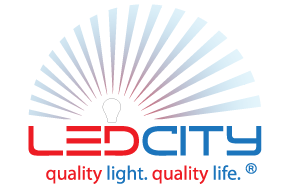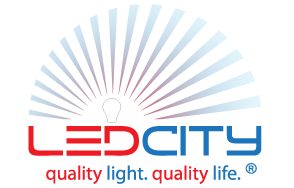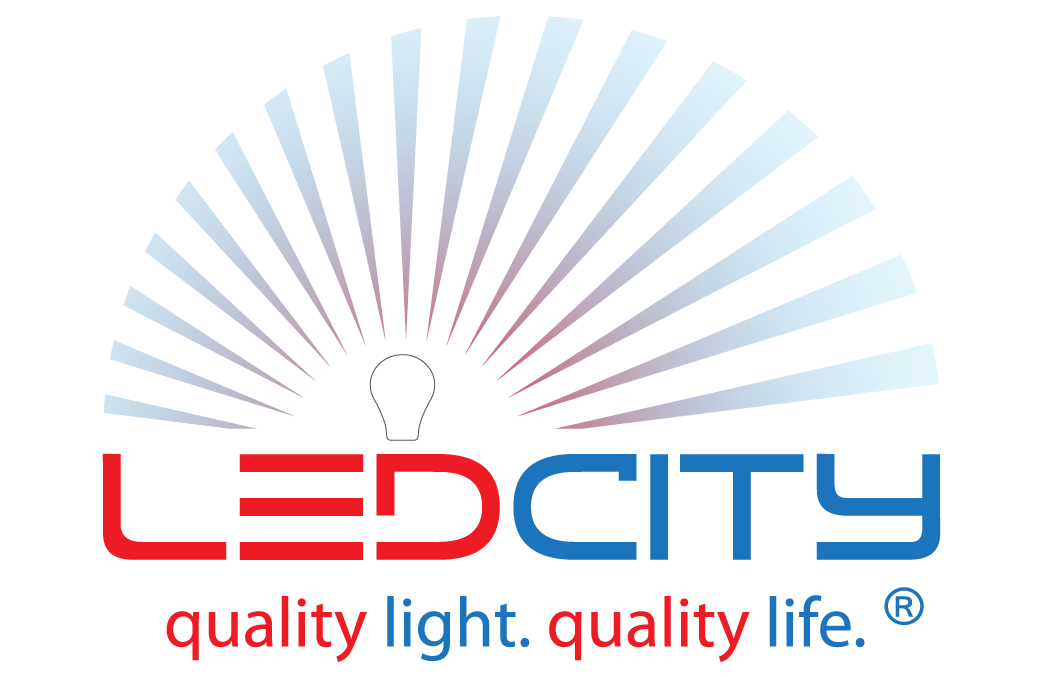How to Choose LED Bulbs and Tubes

LED bulbs and tubes are increasingly popular choices for homeowners and lighting professionals. Their popularity is primarily due to their energy efficiency, longevity and high-quality light production. While you may have the general idea about LED and tubes, we hope to give you a clearer picture what your considerations should be before making a switch to this innovative source of light.
Types of bulbs and tubes
There are various types of light bulbs and tubes that are used in standard lighting installations that you should be familiar with. These lamps and tubes have been on the market in some form or another for quite a few years now. However, many are now in the process of being replaced by LEDs.
Incandescents
The incandescent bulb, invented by Thomas Edison in 1879, is the standard-bearer of traditional lighting. The inviting yellow light it produces is instantly recognizable and suitable for general lighting in various residential and commercial settings where comfort is a top priority. In the following section, we outline a few of the choices consumers have when it comes to incandescent bulbs and lamps.

G-bulb
Globe-shaped G bulbs are most often found in decorative lighting fixtures. A common use would be brightly the lit globe lights running above and beside a vanity mirror. They are also used in ceiling fixtures where the bulbs create a pleasing effect when viewed from below.

A-bulb
This “pear-shaped” bulb is probably what you picture when you think of a light bulb. It appears as a gas-filled glass container with a filament wire that lights up when electricity passes through it. The most common application for this light bulb is for room lighting in the household. These lights are not commonly found in businesses or government buildings due to the significant amount energy required to keep them lit.

D-bulb
This is a range of “decorative” bulbs that come in different shapes including candle, flame, and others. These lights are commonly found in businesses such as restaurants and pubs.

MR lamps
The multifaceted reflector (MR) lamp is a low-voltage light most suitable for directional lighting. The most common applications include track lighting, desk lamps, recessed ceiling lamps. MR lamps come in different sizes: they’re labeled with a number based on the diameter measured in eighths of an inch (e.g. MR16 comes with a diameter of 16/8 or 2 inches). This form of lighting traditionally relies on halogen bulbs.

PAR lamps
The PAR lamp is more powerful and larger than the MR lamp. These lights use a parabolic (U-shaped) reflector to send the light out of the front of the bulb. PAR lights send out a powerful beam of light and can be used for spot lights in the theater. They are also commonly used in outdoor applications including signs and flood lighting. Similar to MR lamps, PAR lamps are also labeled with a number representing the diameter of the lamp measured in eighths of an inch (e.g. PAR56 comes with a diameter of 56/8 or 7 inches).
Fluorescents
Fluorescent lighting produces light by passing electricity through mercury-vapor gas which causes the phosphor casing inside the lamp to glow. In terms of electricity used, fluorescent lamps are the significant step up from the incandescent bulb by producing much more light for the energy required.

Fluorescent tubes
The fluorescent tube is on of the most popular lighting methods available. We’re used to seeing these familiar white cylinder-shaped lights in many public settings including the doctor’s office or in a department store. In most cases, fluorescent tubes lights produce cooler, more precise lighting. However, with fluorescent tubes, there is the possibility to produce softer, more yellow light as well. These lights are appropriate for both indoor and outdoor use, high bay lighting and small areas as well. The fact that they require a ballast to regulate voltage levels makes fluorescent tube installations more expensive initially. However, significant the energy savings will accumulate over time, making them a traditional favorite for commercial use.

CFLs
Compact Fluorescent Lights (CFLs) were made to replace the incandescent bulb. Most CFLs will fit in a common light bulb socket found in the home. While they are generally known to produce a cooler, bluish light, there are options for warm, yellow CFLs as well. The most common application is in the home, but they can also be found in commercial settings due to their energy-saving capabilities. CFLs can easily be replaced by LEDs with the similar shape and base.
HIDs

High-intensity discharge (HID) lamps produce a great deal of light. This bulb works similar to the incandescent bulb but it replaces the filament with a capsule of gas. They’re known for their high-efficiency ratings and long lifespan. They bulbs also require a ballast to operate. Often times these lights are chosen when a great deal of light is needed such as streetlights, gymnasiums, stadiums, and warehouses. The lights typically appear bright blue or bright yellow and as a result, they are infrequently used when the light’s aesthetic properties are the top concern.
LED BULBS

Light-emitting diodes (LEDs) produce light through a semiconductor chip. LED bulbs come in an extremely wide range of possibilities. There are LED versions of nearly all the lamps we have listed above. However, by retrofitting with LEDs you’ll be able to use significantly less energy with a much longer lasting bulb. Further, LED bulbs come in a wide range of spectrums and colours. The most common colours for LEDs are “warm white”, which produces a comfortable yellowish light, and “cool white,” which produces a crisper, more bluish light.LED bulbs produce significantly less heat than their incandescent or halogen counterparts. However, they still do emit heat.
Bulbs and LED retrofits
Retrofitting traditional bulb lighting installations with LEDs is a straightforward process. Due to their small size and versatility, LEDs can fit into nearly any application traditionally filled by incandescent, fluorescent or HIDs.
Before you jump into your next LED retrofit, however, there are a few of the factors to consider:
Shape

Make sure that you are replacing with a correctly shaped bulb. In most cases, this means you will want to replace the bulb with one that has the same shape as the one you used before. The most common shape of bulbs is the A-bulbs, which are the classic, pear-shaped incandescent bulbs. These are traditional style lights, and while the bulb will be made out of plastic rather than glass, it will appear as the same shape. In addition to the A-bulb, other bulb shapes include decorative globe lights (G-bulb), candle lights, and high- and low-voltage spotlights (MR and PAR lamps).
Base

You need to select the right lamp with an appropriate fitting for the fixture base. Popular bases that are common across are small and large “Bayonet” bases (B15, B22 - with a 22mm pin centre-to-centre distance), the Edison screw base (e.g. E14, E27 - with a 27mm base diameter), and the push base. There are also low-voltage MR bases that work for replacing halogen track lighting and LED PAR lamps for high-voltage spotlights.
LED retrofits
LED retrofits for bulbs are generally straightforward. Basically, you only need to find the right shape and base and then screw or connect it to your existing lighting fixture. With their many benefits and the relative ease of switching over, it’s no surprise that so many consumers, both residential and commercial, are retrofitting their lighting installations with LED bulbs.
Tubes and LED retrofits
While fluorescents used to be the preferred solution for tube lighting installations, advances in LED technology has given us a more efficient option that lasts even longer. However, switching out fluorescent tubes for LEDs presents certain challenges primarily because of ballasts.
Understanding electronic or magnetic ballasts

Fluorescent tubes need a ballast to regulate voltage levels and create a high-voltage burst to turn the light on. There are two forms of ballasts that are generally found in fluorescent tube installations: electronic or magnetic ballasts. In modern installations, the electronic is preferred over magnetic because it eliminates flickering, and is lighter and more efficient.
Types of tubes

You must also pay attention to the shape of the tube before retrofitting. That means you’ll need to know the tube size. Both fluorescent and LED tubes are measured in the same way. The “T” stands for tubular size, and the number represents the diameter of the tube measured in eighths of an inch. For example, a T8 tube would have a diameter of one inch while the T5 would have a diameter of 5/8 inch.
In addition to the classic tube lights, there are also CFLs, U-shaped, and circular fluorescent tubes that can be replaced by LEDs.
LED retrofits

You have a few options when it comes to fluorescent to LED tube retrofits primarily based on what features your LED tubes have, for examples, size, length, base, and colour temperature, etc. The first option is to use LED retrofits with a built-in driver that plugs right in, however, please note that you might need to remove or bypass existing ballast in order for the LED retrofits to work. Another option is to go for LED retrofits with the same base if you are replacing CFLs. The third option is to choose LED battens that equipped with drivers and mounting brackets, however, in most cases, you will need to remove the existing light fixtures in order to fit in the LED battens. LED battens are recommended for new installations.










